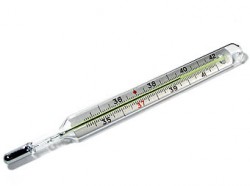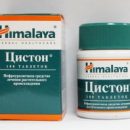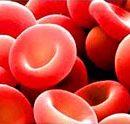Translated from Latin FERTILIS means «fertile, fruitful». Women's fertility is determined by its ability and readiness for conception, to dry out and the birth of a child. From a demographic point of view, the reproductive age of a woman is from 15 to 49 years, although social norms and medical recommendations are somewhat narrowed by these indicators. This period establishes the nature itself. At the same time, how to dispose fertility - depends first of all from people.
What do fertilic days mean

A few days of the monthly cycle, which precede ovulation and complete it, are called fertile. The period most favorable for fertilization includes five days preceding ovulation, and her offensive day. Ability to conception On such days, a woman has the maximum. Time interval consisting of these several days is called a fertilie period, or «Fermity window».
Ovulation - the state of the female organism, when the egg, finished to fertilization, comes out of the follicle of the ovary in the uterine tube. It is believed that the greatest probability of becoming pregnant exists in one day before ovulation. At the same time, the viability of spermatozoa in the vagina is several hours, in the cervix - about 5 days. Egg after ovulation saves the ability to fertilize during the day.
The average duration of the women's monthly cycle is 28 days, ovulation comes to the middle of the monthly cycle.
These data are averaged, some deviations in one way or the other are often observed. There are several methods for determining favorable days.
Calendar method

Lies in tracking body temperature during a monthly cycle. The fact is that before the ovulation of most women, it increases slightly. Oscillations range from 0.2 to 0.6 ° C. It is necessary to measure basal temperature (in the back pass) every day, at the same time. It is recommended to carry out measurements in the morning - before you got out of bed. Measurements need to record daily. With regular observation of basal temperature, as well as the construction of the oscillation schedule for several cycles - this method is quite informative.
Special ovulation test
These tests are sold in pharmacies, five strips are usually present in the set. It is recommended to start testing 5-6 days before the alleged ovulation. The principle of action is the same as in tests for pregnancy, not chorionic gonadotropin is subject to identification, but a luteinizing hormone. First of all, you need to carefully examine the instructions. It is recommended to test every day approximately at the same time, with periodicity one or twice a day. It will be necessary to assemble the urine into clean dishes, immerse the test strip to it for a while - and then wait a few minutes before getting the result. Before ovulation, there is a sharp release of luteinizing hormone, which is successfully tracked using this test. A positive result confirms extremely high fertility directly at the time of testing, that is, the full readiness of a woman to conceive in the coming day. The effectiveness of this test when planning pregnancy is quite high.
Determination of the fertile period by the nature of the selection

Some women successfully apply vaginal observation method discharge. The cervix makes a special secret, the so-called cervical mucus - to maintain the viability of spermatozoa in the genital paths. With the onset of ovulation, the characteristics of the secreted secret (consistency and the number of secretions) are significantly changing.
During the monthly cycle, the following changes in the state of the cereal (cervical) mucus are observed:
- «Dry» Days - this period begins after the end of menstrual bleeding, duration a few days. At this time, the selection is visually missing, the mucous membrane of the vagina to the touch is dry;
- Next, with the approach of ovulation, sticky, adhesive transparent sections are observed - fertilies begin;
- Selection appear in the form of a tight viscous mucus, resembling a protein of a raw egg, which indicates the achievement of the highest level of fertility - the proximity of the arrival of ovulation, as well as its offensive.
This method is easy to use, does not have side effects. The disadvantages include: a rather high error, low contraceptive effect. In some diseases, accompanied by a change in the nature of vaginal discharge, this method is ineffective.
There is a sufficiently large number of signs of fertile days, as well as methods of their tracking. Knowledge of your physiology - in particular, signs of fertile days will help you control the time favorable for conception - or avoid unwanted pregnancy, if it is not included in your plans.









